Do you have a question about the Pulsar Krypton 2 XQ35 and is the answer not in the manual?
Covers Type, Resolution, Pixel Pitch, NETD, and Frame Rate of the microbolometer.
Details magnification levels and lens specifications for optical performance.
Covers display type, resolution, power, protection, temperature, dimensions, and weight.
Details Photo/Video Resolution, Format, and built-in Memory capacity.
Explains the thermal imager's purpose and mounting capabilities on optical devices.
Lists all items included in the product box for the user.
Details all parts of the thermal imager via a numbered diagram for easy identification.
Describes the purpose and operation of each button on the device.
Highlights key features like optical conversion, calibration modes, sensitivity, remote control, and watertightness.
Details video recording, Wi-Fi integration, and compatibility with mobile applications.
Covers battery type, charging precautions, and safe handling guidelines.
Explains how to charge the battery using different methods and indicators.
Details battery insertion into the device and using external power sources.
Instructions for attaching the Pulsar 3x20 B monocular to the thermal imaging module.
Guides on attaching adapters to daylight optical devices for thermal imaging.
Steps for turning on the device and adjusting initial display settings.
Explains button functions and how to navigate through the device menus.
Describes display elements, icons, and information shown on the status bar.
How to access and use the quick menu for rapid setting adjustments.
Explains how to enter, navigate, and exit the main menu system.
Covers Amplification, Smoothing Filter, User Mode, and Colour Modes settings.
Covers Wi-Fi activation, password, access levels, Wi-Fi band, and Bluetooth settings.
Accessing device details, general settings, language, date, and time.
Covers display position, calibration profiles, and defective pixel repair.
Instructions for capturing photos and recording videos using the built-in recorder.
How to use the wireless remote control for device operation and menu navigation.
Connecting the device to a PC via USB for power or memory card access.
Information on the Stream Vision 2 app and procedures for firmware updates.
Recommends pre-use checks and regular maintenance procedures for the device.
Guides for cleaning the device and proper storage to ensure longevity.
Addresses problems like no power, poor image quality, and calibration errors.
Solutions for Wi-Fi connection problems and remote control issues.
Troubleshooting for remote control functionality and status bar visibility.
Covers legal disclaimers, EMC standards, and manufacturer rights.
Covers Type, Resolution, Pixel Pitch, NETD, and Frame Rate of the microbolometer.
Details magnification levels and lens specifications for optical performance.
Covers display type, resolution, power, protection, temperature, dimensions, and weight.
Details Photo/Video Resolution, Format, and built-in Memory capacity.
Explains the thermal imager's purpose and mounting capabilities on optical devices.
Lists all items included in the product box for the user.
Details all parts of the thermal imager via a numbered diagram for easy identification.
Describes the purpose and operation of each button on the device.
Highlights key features like optical conversion, calibration modes, sensitivity, remote control, and watertightness.
Details video recording, Wi-Fi integration, and compatibility with mobile applications.
Covers battery type, charging precautions, and safe handling guidelines.
Explains how to charge the battery using different methods and indicators.
Details battery insertion into the device and using external power sources.
Instructions for attaching the Pulsar 3x20 B monocular to the thermal imaging module.
Guides on attaching adapters to daylight optical devices for thermal imaging.
Steps for turning on the device and adjusting initial display settings.
Explains button functions and how to navigate through the device menus.
Describes display elements, icons, and information shown on the status bar.
How to access and use the quick menu for rapid setting adjustments.
Explains how to enter, navigate, and exit the main menu system.
Covers Amplification, Smoothing Filter, User Mode, and Colour Modes settings.
Covers Wi-Fi activation, password, access levels, Wi-Fi band, and Bluetooth settings.
Accessing device details, general settings, language, date, and time.
Covers display position, calibration profiles, and defective pixel repair.
Instructions for capturing photos and recording videos using the built-in recorder.
How to use the wireless remote control for device operation and menu navigation.
Connecting the device to a PC via USB for power or memory card access.
Information on the Stream Vision 2 app and procedures for firmware updates.
Recommends pre-use checks and regular maintenance procedures for the device.
Guides for cleaning the device and proper storage to ensure longevity.
Addresses problems like no power, poor image quality, and calibration errors.
Solutions for Wi-Fi connection problems and remote control issues.
Troubleshooting for remote control functionality and status bar visibility.
Covers legal disclaimers, EMC standards, and manufacturer rights.
| Objective Lens Diameter | 35 mm |
|---|---|
| Battery Life | 8 hours |
| Objective lens | F35/1.0 |
| Display type | AMOLED |
| Built-in memory | 16 GB |
| Wi-Fi channel | 2.4 GHz |
| Operating temperature | -20°C to +50°C |
| Waterproof level | IPX7 |
| Eye Relief | 50 mm |
| Recognition Range | 600 m |
| Resolution | 384x288 pixels |
| Sensor type | Uncooled microbolometer |
| Video / Photo format | MP4 / JPEG |
| Power supply | Rechargeable battery |
| Battery type | Lithium-ion |
| External power supply | 5V USB |
| Exit Pupil | 5 mm |
| Video / Photo resolution | 640x480 pixels |

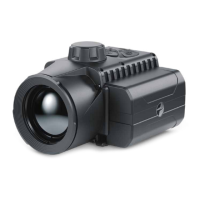
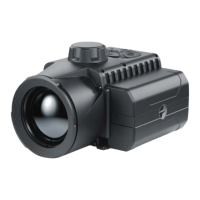
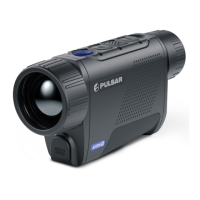
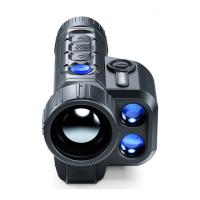

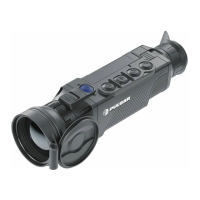

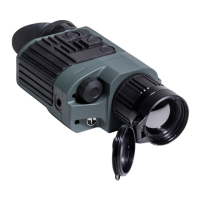
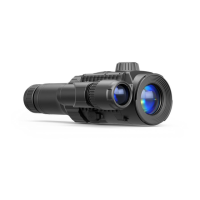
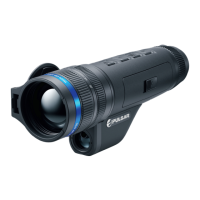
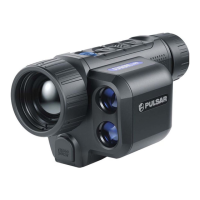
